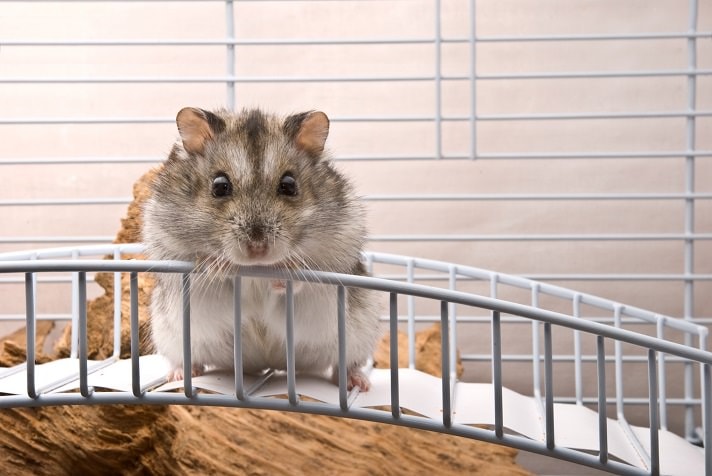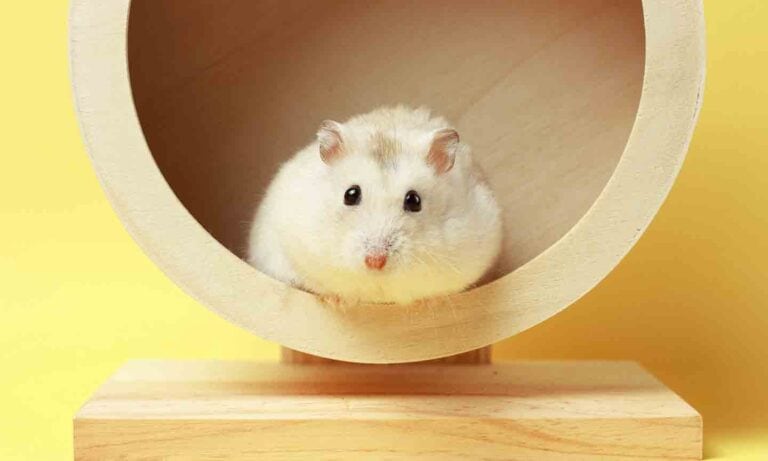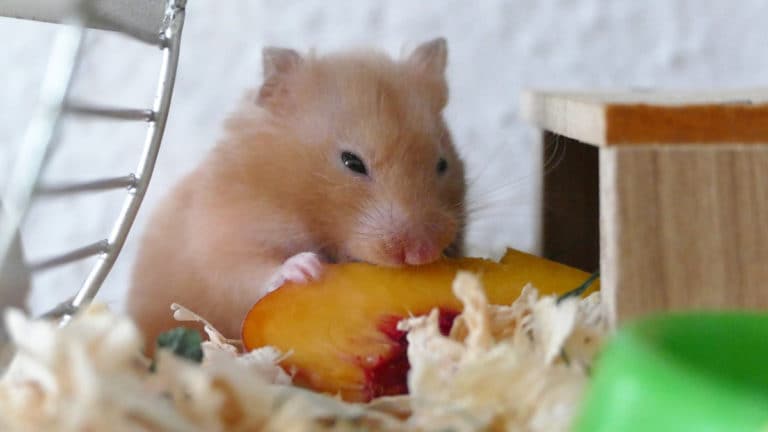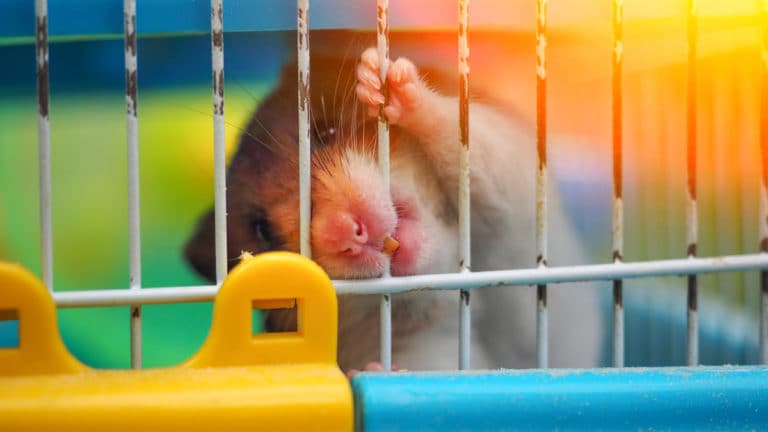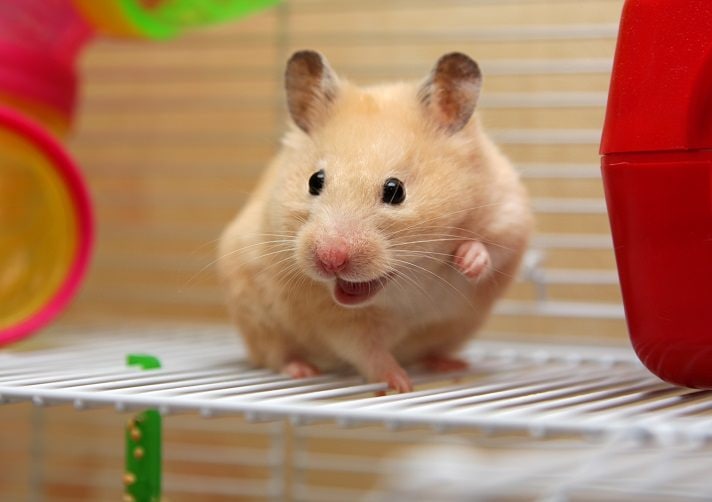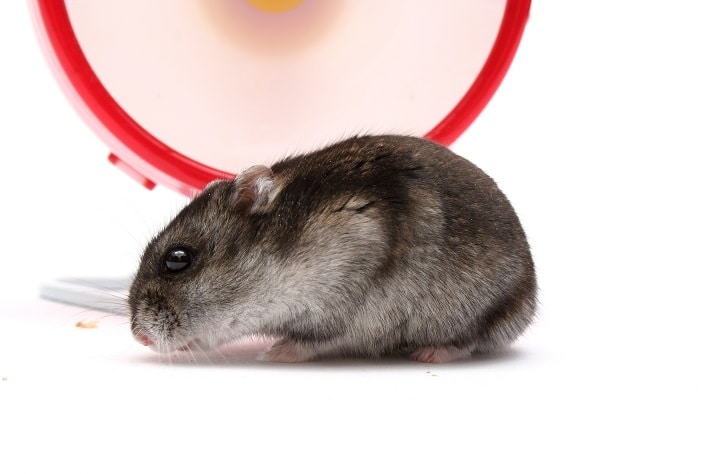Did your hamster get pregnant? If you are preparing for baby hamsters, it’s important to know what’s to come and what you should do, so your hamster doesn’t get pregnant again (or the baby hamsters!).
If your hamster is pregnant and you know the arrival should be any day now, you may be wondering what you are in for and what you should plan on doing to ensure everything goes smoothly.
We spoke with Erin Ramsey, breeder and co-founder of the California Hamster Association, and Dr. Micah Kohles, DVM, MPA, a co-founder of Flatwater Veterinary Group and the VP of technical services and research for Oxbow Animal Health in Omaha, Nebraska, and got 23 facts about baby hamsters.
- Hamster babies, called pups, grow very rapidly.
- All hamsters are born naked and blind.
- When hamsters are about a week old, their teeth emerge from their gums and their hair become visible. After about five days of being born, the pigmentation on their skin begins to show, Ramsey says.
- Between 10 and 14 days, hamster pups voluntarily become mobile.
- Hamsters can start to eat solids at 10 days old, Ramsey says. At around 14 to 15 days, hamsters should still be nursing from their mother, but they can experiment with different foods, like small amounts of fruit, veggies, seeds and their adults’ food, explains Kohles.
- 14 days of age is “the ideal time to begin to familiarize your young hamster with being handled,” says Kohles. This should be a thoughtful process where you can help desensitize them to handling to minimize the stress of the baby hamsters. Don’t just go right in and pick up the hamster right away, he says.
- At around 14 to 17 days of age, their eyes begin to open. “Hamsters don’t see well and are color blind, but they are able to see,” says Kohles.
- At around 17 to 18 days old, Ramsey says that a baby hamster’s ears will pop up.
- At around 3 to 4 weeks of age, hamsters resemble miniature adults.
- It’s not uncommon for Syrian hamsters to continue to nurse from their mother until the 26th to 28th day after they were born.
- Dwarf hamsters are weaned by their mother earlier than Syrians, at about three weeks, but a dwarf mother may tolerate her pups a little longer than a Syrian mother.
- At about 4 weeks old, all hamster babies should be split from the mother into two cages—one for each sex. Some hamster mothers might allow the females to stay for a day or two more. “It is natural behavior in the wild for the mother to push the pups out into the wild. Our goal is to emulate natural behavior/environment in everything we do,” says Kohles.
- If the dwarf father remained in the cage, mating will likely occur soon after birth—as little as three to four days, so a new litter of hamsters could appear when the first litter is about 3 weeks old. To avoid unintended pregnancies, it is suggested to remove the father hamster from the cage. This isn’t a concern with the Syrian species because they’re solitary and shouldn’t share a cage.
- Male dwarfs (if the female allows him into the nest) may make excellent fathers and help with baby-sitting duties. Siblings from the previous litter will also help if the mother hamster allows them to remain in her cage. Remember to remove the first litter from the cage by the time they are 4 weeks old to avoid any more unplanned pregnancies!
- At 4 to 5 weeks, all hamster species are fully weaned and capable of fending for themselves.
- Hamsters of the Syrian species are normally sexually mature as early as 4 weeks of age—a female Syrian hamster can conceive, and a male Syrian hamster can father a litter. If you don’t separate the sexes in time, get ready for more litters!
- You can house same sex Syrians together from for their first four to six weeks of life, says Ramsey. Having them live with siblings up until six weeks is important so they can learn what pain is by playing and wrestling with their siblings, she says.
- By 5 to 7 weeks of age, the fur on Syrian longhaired males (if going to develop a good “skirt”) will be much longer than the fur of longhaired females of the same age. Groom a longhaired male hamster with a soft brush or small comb when it’s young to get it used to the process of removing mats and tangles. The task of grooming will then be easier when the hamster reaches old age.
- Dwarf hamsters appear to mature sexually later than Syrians if paired with a mate of the same age — usually at about 3 to 4 months of age. However, there are exceptions. Litters are conceived when the female is around 8 to 9 weeks old, so there isn’t the same urgency to split the sexes as with Syrian hamsters. If a female dwarf is paired with an older male, however, conception can take place.
- Unlike the territorial Syrian, dwarf hamsters can live together in single-sexed pairings or colonies. Once they mature at around 12 weeks of age, however, fights can occur that may cause serious injury. In such a case, you must split the pair into separate cages or, in the case of a colony, remove the one being bullied to a separate cage.
- At 12 weeks of age, Syrian hamsters can be six to eight inches long, so some of them may outgrow the exercise wheel you first purchased. Small wheels can force a hamster to arch its back too far and may cause injury. Purchase a larger wheel immediately if you notice your hamster arching its back while running in the wheel.
- Never use a wire wheel for Syrians. If you don’t use the proper wheel, a Syrian hamster’s long hair could get caught in the spindle and be pulled or painfully trap the hamster. Syrians need a nine inch or larger wheel. They also have saucers that can be used that are chinchilla sized. Never take away a wheel unless they are sick or have an injury.
- As far as housing goes, the bigger the cage, the better. “The California Hamster Association along with many online hamster groups recommend a minimum of 450 square inches of unbroken space,” Ramsey says.
Like this article? Please share it, and check out:
By: Christine Logsdail and Lindsay Schencker
Featured Image: Via realperson/iStock/Thinkstock
Share:
